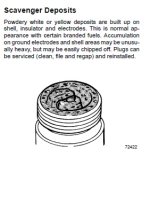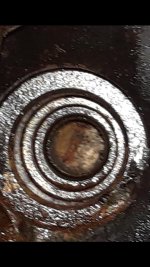[email protected]
Member
I was winterizing my 7.4, and 2 of the 8 plugs had a sandy/powdery yellowish dry substance on them, it was the back last 2 plugs on the port side. When I looked in the holes, said substance is completely bridged over the holes, (where the spark plug electrodes protrude into the combustion chamber. A few years back, I had a shady mechanic, who after doing a tune up, I mysteriously had water in the oil, it was foaming everywhere, he, at the time said I needed a new motor, but I refused, got the boat back, did a flush, changed the oil twice, replaced plugs, etc. The oil looks great. Could this be some sort of residue from way back? The past couple years the boat did have issues at higher rpms, but we mostly prefer to cruise at slower speeds anyhow, and this is apparently the smoking gun. I also put in a marine thermostat, the mechanic had installed a high performance one. My boat uses raw fresh water for cooling. Would it be safe for me to use a tiny attachment on my shop vac and suck this stuff out, then fog the engine real good, maybe squirt some mystery oil in those 2 cylinders, replace all the plugs and cross my fingers? Any advice would be greatly appreciated!! Happy Holidays



